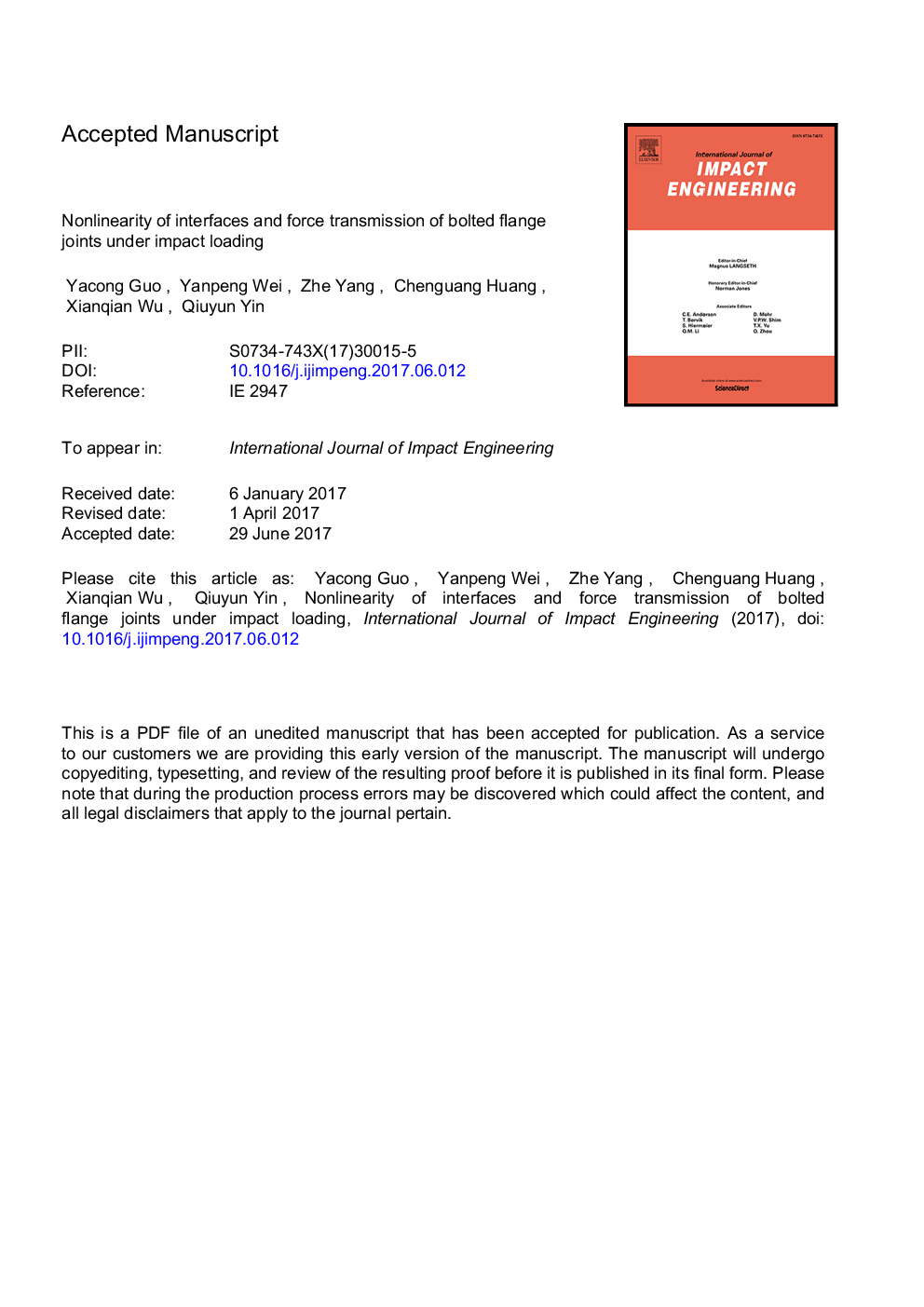| Article ID | Journal | Published Year | Pages | File Type |
|---|---|---|---|---|
| 5015434 | International Journal of Impact Engineering | 2017 | 27 Pages |
Abstract
Vibration of flange joints and force transmission characteristics of connection interfaces are important due to concerns over the structural strength and signal identification in engineering structures such as missiles and rockets. However, nonlinear factors such as clearance, damping and discontinuous interfaces make it difficult to predict the responses under specific excitations such as shock impacts. This paper proposed a typical configuration of a bolted flange joint and investigated the response of vibration and dissipation of the joint under a series of impact loadings. The amplitude of excitation was 120â¯MPa, and the duration of the loading ranged from 20â¯Î¼s to 200â¯Î¼s. The excitations of high amplitude and frequency lead to a vibrational response coupled to a shock response of the joints. The connecting interfaces contributed to the distortion of the shockwave and changed its frequency, which can be characterized by the factor α. Those interfaces were also sources of energy dissipation, and their effect decreased as the frequency of excitation decreased. This methodology is helpful for predicting the local behavior of joints in a complex engineering structure under extreme conditions.
Related Topics
Physical Sciences and Engineering
Engineering
Mechanical Engineering
Authors
Guo Yacong, Wei Yanpeng, Yang Zhe, Huang Chenguang, Wu Xianqian, Yin Qiuyun,
